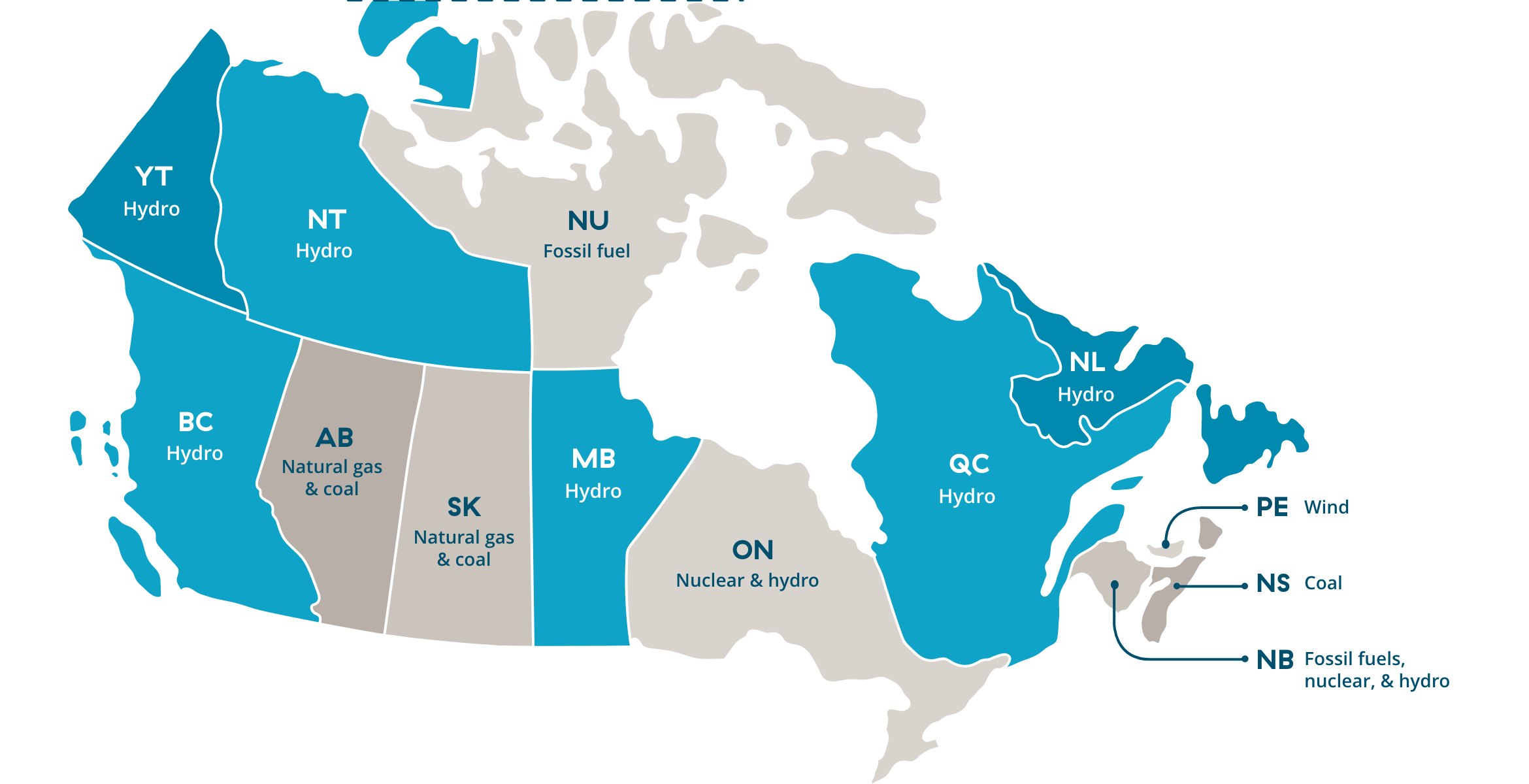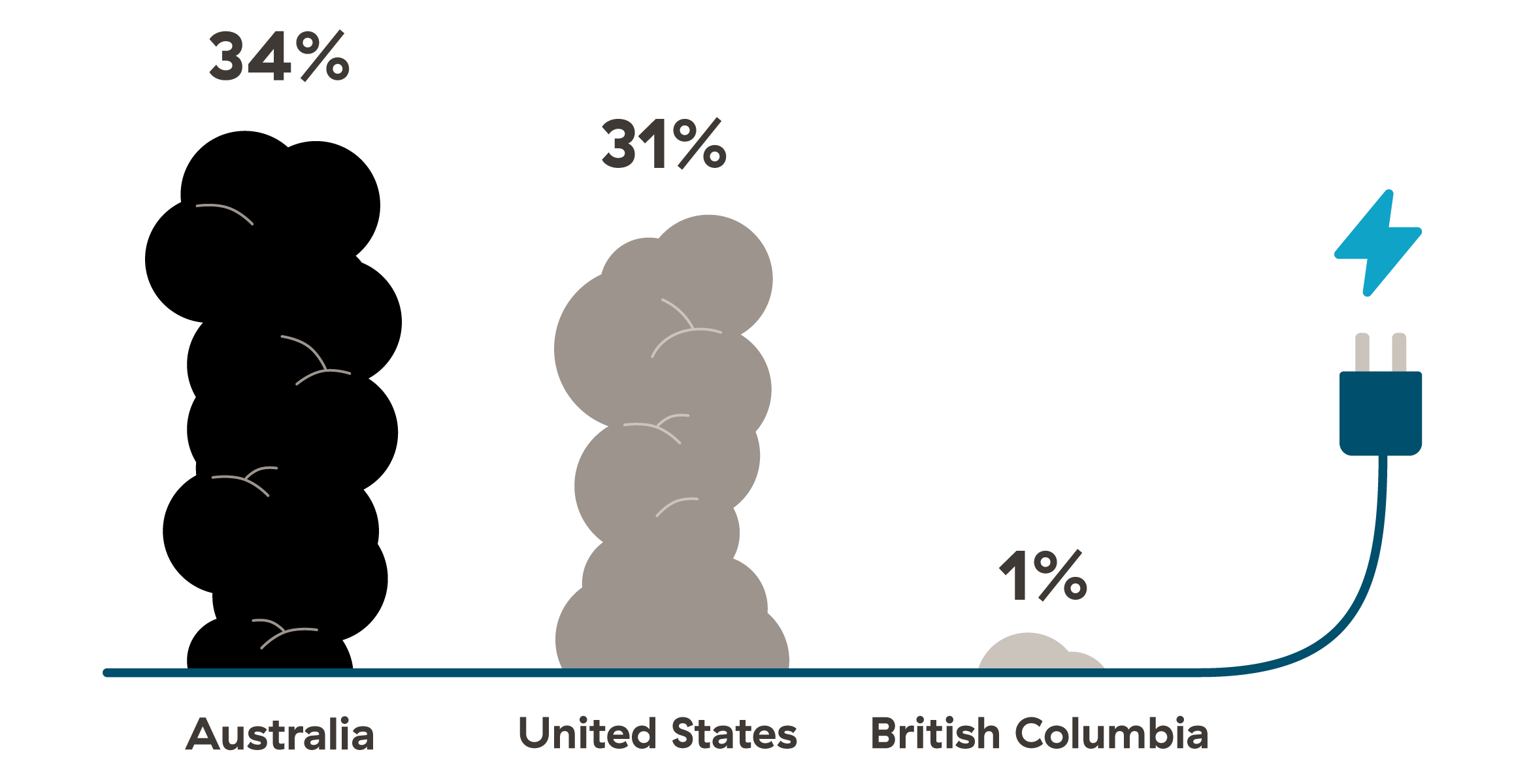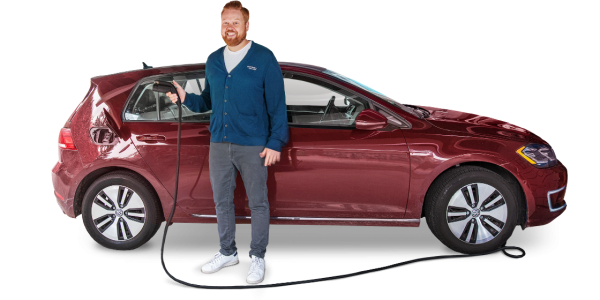Why B.C. is such a great place to drive an electric vehicle
According to Science World, the estimated annual rainfall in Vancouver is 146 cm. Over in Tofino, it's a whopping 327 cm. While many people complain about the rain in B.C., we never do at BC Hydro. Quite the opposite. All that rain (and melted snow) keeps our reservoirs full and our turbines turning to generate electricity for the whole province. This simple, sustainable process is why BC Hydro electricity is an incredible 98% clean.
In other parts of North America, where electricity is generated using fossil fuels, you might wonder how sustainable driving an electric vehicle (EV) really is. But in B.C., charging and driving a typical EV produces a minimal amount of greenhouse gases compared to those emitted by an equivalent gas-powered vehicle covering the same distance.
This map indicates the primary power generation source for each of Canada's provinces and territories.

Importance of clean energy
A 2023 report from the United Nations arrived with the warning that climate change is damaging human health, air, water and land, and killing off or reducing populations of many animal and plant species. But the report emphasized that it's not too late to act.
Electrical utilities across the world find themselves at the centre of this climate action, leaning more and more on clean energy to reduce fossil fuel use and the pace of climate change. And most look with considerable envy at B.C.'s investment in clean, renewable electricity generated by the power of falling water.
In B.C., electricity generation accounts for less than 1% of the province's greenhouse gas emissions. How does that compare? In the United States – which still leans heavily on coal and other fossil fuels to produce power – emissions from electricity generation produce 31% of total GHG emissions. And in Australia, that number is approximately 34%.
Clean electricity is the pathway to achieving our share of Canada's targets to support the Paris Agreement, which sets out to limit the global temperature increase this century to well below 2 degrees Celsius above pre-industrial levels.
This graph shows the percentage of greenhouse gas emissions attributed to electricity generation methods in the province of B.C. as compared to the countries of the United States and Australia.

Hydroelectricity
A major advantage for the EV future
It's vital to have a source of electricity you can ramp up and down to match customer demand. In B.C., all that water stored in our reservoirs works like a battery we can plug in to at any time.
While regions that rely heavily on wind or solar power get energy only when the sun shines or the wind blows, the water stored in our reservoirs allows us to more easily integrate other renewables. We're now using a fair amount of wind power and an increasing amount of rooftop solar.
B.C.'s hydroelectric advantage has powered our economy and our homes for decades, at electricity rates among the lowest in North America. Now it has opened the door to reduced reliance on gas-powered cars and trucks, which are part of a transportation sector that runs mostly on fossil fuels and produces a significant portion of B.C.'s greenhouse gases.
Currently, there are tens of thousands of EVs in B.C. By 2030, we forecast that there'll be hundreds of thousands. And the Government of B.C.'s CleanBC plan includes the Zero-Emission Vehicles (ZEV) Act that requires 100% of all new light-duty vehicle sales are ZEVs by 2040.
This ambitious goal really is attainable, thanks to the growing number of EV chargers across the province, multiple incentives for eligible vehicles and chargers, and of course, BC Hydro's 98% clean, green electricity.


